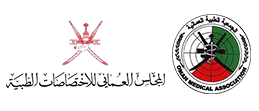Oman’s Healthcare Transformation:
Embracing Innovation, Access, and Equity in 2025
03 August 2025 By OHEC Article by Swathi Suresh
In 2025, Oman’s healthcare sector is undergoing a strategic transformation anchored by digital innovation, equitable policy, and long-term planning. The Ministry of Health’s launch of the National Health Policy laid the groundwork for a healthcare redesign rooted in Vision 2040, driving sustainable, inclusive, and technology-enabled service delivery across the Sultanate.
Central to this shift is the rapid expansion of digital health. Oman’s projected digital health market revenue reaches nearly US $98 million in 2025, demonstrating strong growth in telemedicine, wearable health devices, and AI‑powered diagnostics. Providers across the public and private sectors now routinely integrate platforms like Shifa+, AI triage tools, and remote monitoring systems to manage chronic diseases, conduct post-operative care, and connect patients in rural governorates such as Dhofar and Al Wusta.
In tandem with digital adoption, Oman has introduced blockchain into its National Health Information System (NHIS). Pilot programs running in Muscat, Sohar, and Nizwa hospitals have already reduced administrative delays by more than 40%, while significantly improving cross-institutional patient record access and combating insurance fraud through immutable billing data.
Underlying these initiatives, healthcare financing is getting a boost from major infrastructure investments. The government has allocated over 11% of its total budget to healthcare over the past four years to address growing disease burdens and demographic change. Expansion of public healthcare includes the opening of new hospitals and diagnostic centres, while private healthcare sectors are growing rapidly—currently contributing 30–40% of national health services, supported by mandated insurance reforms and platforms such as Dhamani for seamless claims processing.
Human resource development is also front and center. In tandem with Oman’s digital healthcare ambitions, the country is investing in Health Technology Assessment (HTA) and training programmes to professionalize health informatics, biomedical engineering, and technology-enabled healthcare delivery. By 2025, the Ministry is establishing a structural roadmap for HTA and setting up the Oman Health System Observatory to guide evidence-based allocations.
Equity and wellness remain prioritized through the adoption of the “Health in All Policies (HiAP)” model, which emphasizes cross-sector collaboration to improve population health outcomes. Complementing this, community health promotion—including the Healthy Cities initiative and expanded access for vulnerable groups—was showcased globally at Expo 2025 in Osaka, reflecting Oman’s focus on preventative care and health literacy.
Taken together, these developments reflect Oman’s increasingly resilient and modern healthcare ecosystem. By embracing blockchain for record integrity, scaling telehealth for rural access, elevating HTA for resource efficiency, and committing to universal public health coverage, Oman is not only meeting current healthcare needs—it is laying the groundwork for sustained health resilience and innovation through 2030 and beyond.



